Expert’s Rating
Pros
- Stunning thin and light design
- Impressively durable
- Superb main camera
- Gorgeous display
- Top-tier software experience
Cons
- Mediocre battery life
- No telephoto lens
- Frustratingly slow charging
- Prone to running hot
Our Verdict
The S25 Edge delivers a convincing flagship phone experience within an impressively thin and light design. But with compromised cameras and battery life, most people will be better off with the Galaxy S25+, which offers better specs for less money.
Price When Reviewed
This value will show the geolocated pricing text for product undefined
Best Pricing Today
Price When Reviewed
From $1,099
Best Prices Today: Samsung Galaxy S25 Edge
$1099
Samsung releases dozens of phones each year, but few have generated a buzz like the Galaxy S25 Edge.
First teased at the end of the Galaxy S25 series launch in January, Samsung’s new ultra-thin flagship was the subject of near-constant leaks in the months leading up to its May launch.
So, does the S25 Edge justify the hype, or fall flat on its face? What, if anything, do you have to give up to get an incredibly thin phone? I spent over a week using the Galaxy S25 Edge to find out – here are my in-depth thoughts.
Design & Build
- 5.8mm, 163g
- Durable glass and titanium build
- IP68 water and dust resistance
It feels very appropriate that form is the first thing to be discussed, as the design of the S25 Edge is the only reason to buy it over the other Galaxy S25 phones – but what a design it is.
At just 5.8mm, it’s the slimmest Galaxy S series phone to date, and one of the thinnest phones ever made. In fact, it’s barely thicker than the USB-C port. To get much slimmer, you’d have to go totally portless, but it doesn’t feel like we’re quite ready for that yet.
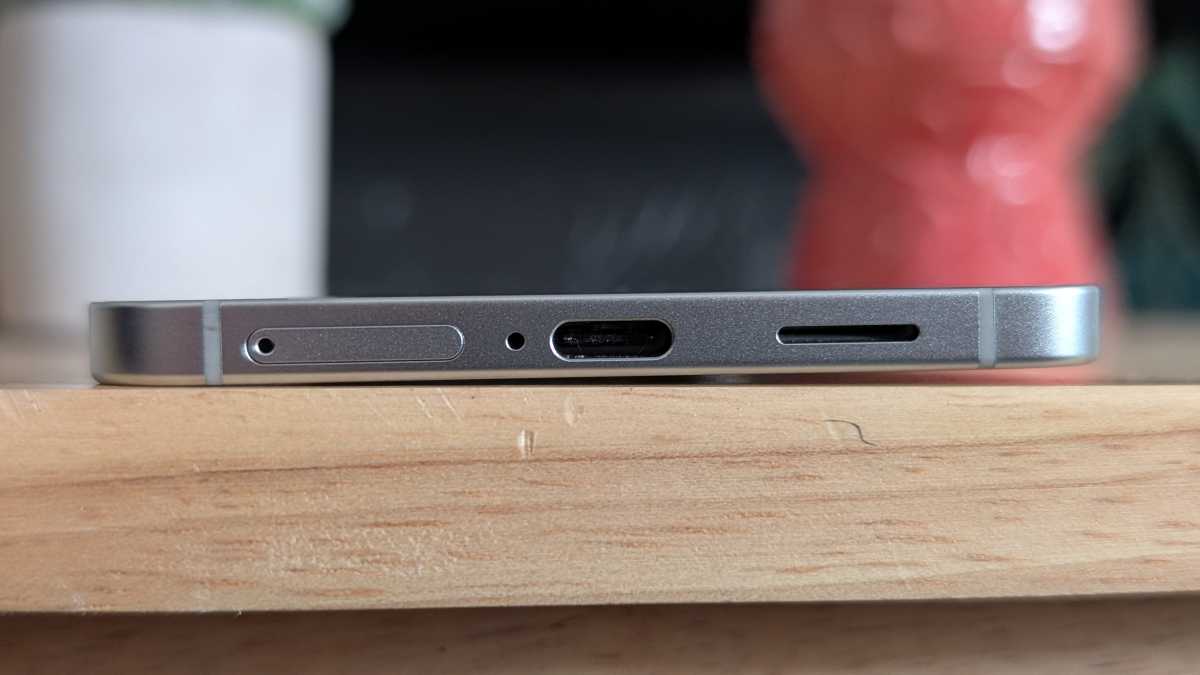
Anyron Copeman / Foundry
At 163g, the S25 Edge’s weight is less remarkable. It’s not even the lightest phone in the Galaxy S25 series – that award goes to the 162g regular Galaxy S25 – though you will get a significantly larger 6.7-inch display here.
And the benefits of this lightweight design became abundantly clear during my testing. Using the S25 Edge for upwards of 30 minutes at a time caused none of the usual hand strain, and I barely even noticed it was in my pocket at times. However, the latter speaks partly to the size of most men’s trouser pockets, and women may not be able to say the same.
The design of the S25 Edge is the only reason to buy it over the other Galaxy S25 phones – but what a design it is
Ultimately, it’s the combination of thin and light that makes the S25 Edge so impressive. I was concerned that this would make it feel flimsy, but Samsung has ensured that this isn’t the case.
The glass front is equipped with Gorilla Glass Ceramic 2, making it the first smartphone to have this. Manufacturer Corning suggests it can survive drops of up to 1m on a “surface replicating concrete”. For obvious reasons, I didn’t try this myself, but it was totally unscathed after falling onto a table and the leg of a chair.
Alongside Gorilla Glass Victus 2 on the back and a titanium frame, the S25 Edge is built to withstand more than just normal wear and tear. Just like the other S25 phones, you also get an IP68 rating, meaning it’s fully protected against dust and submersion in up to 1.5m of fresh water.
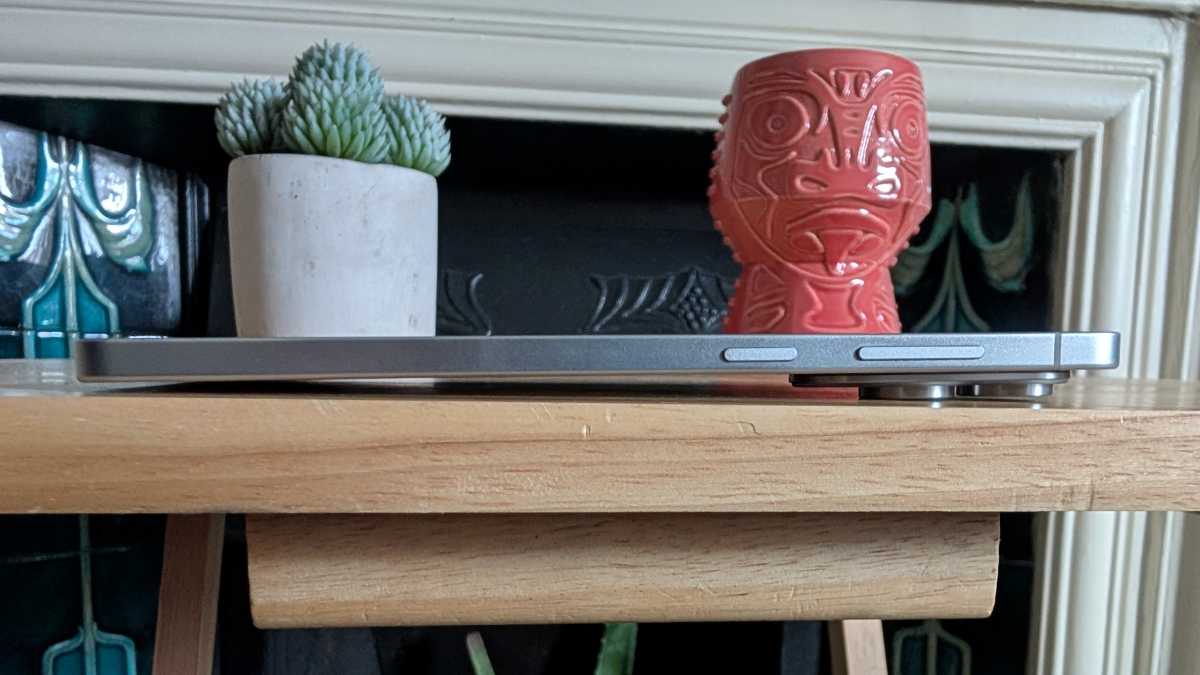
Anyron Copeman / Foundry
As a result, I felt fairly comfortable using the phone case-free throughout my testing. The sole issue was the lack of grip from the glass back, which meant it fell out of my pocket on a few occasions.
The only solution to this is to apply a case, which rather defeats the point of having such a slim phone. However, the official Samsung ones I’ve tried manage to keep bulk to an absolute minimum. It might be something you only use occasionally, as needed.
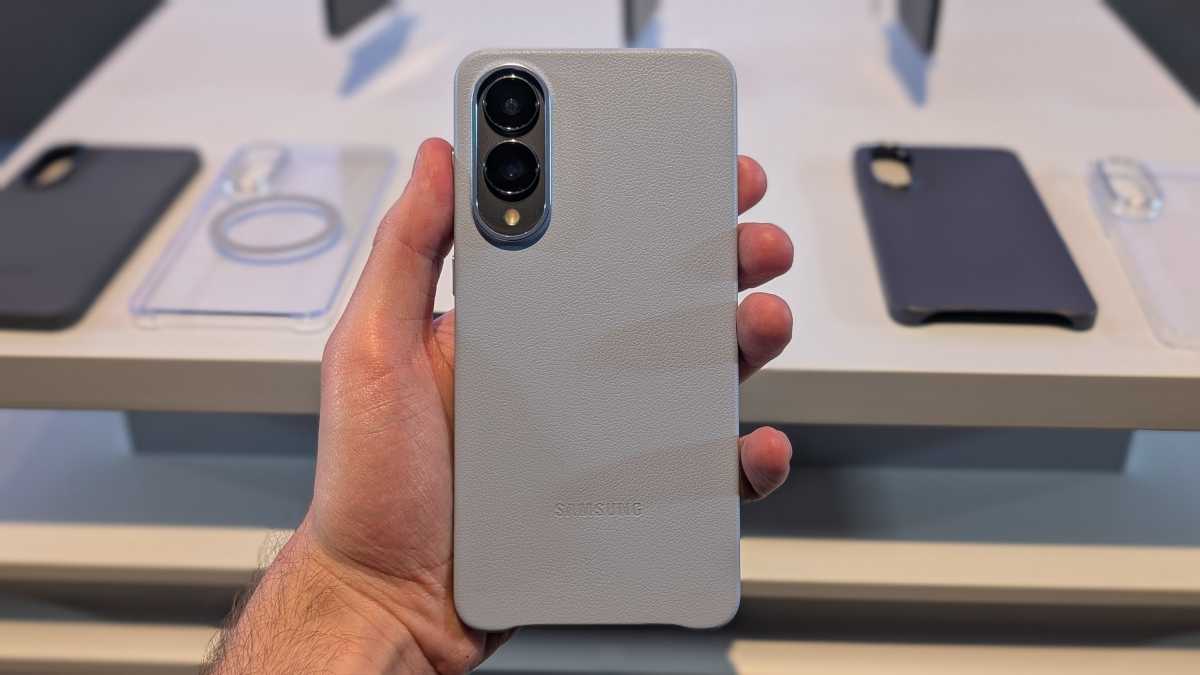
Anyron Copeman / Foundry
However, the number of people who will use the S25 Edge case-free makes the colour options all the more disappointing. It’s available in just three – Silver, Icyblue and Jetblack – while there are no fewer than seven different variants of the S25+. There’s nothing wrong with the Silver model I tried, but it is a bit boring.
Screen & Speakers
- 6.7-inch QHD+ AMOLED
- 120Hz, 2600 nits of peak brightness
- Stereo speakers
The Galaxy S25 Edge boasts a 6.7-inch, QHD+ (1440 x 3120) AMOLED display, complete with a dynamic 120Hz refresh rate.
If that sounds familiar, it’s because it’s identical to the Galaxy S25+. Literally. They have the exact same screen. Instead of copying and pasting what I said in my S25+ review (but feel free to read my thoughts there too), I’ll try to describe it again.
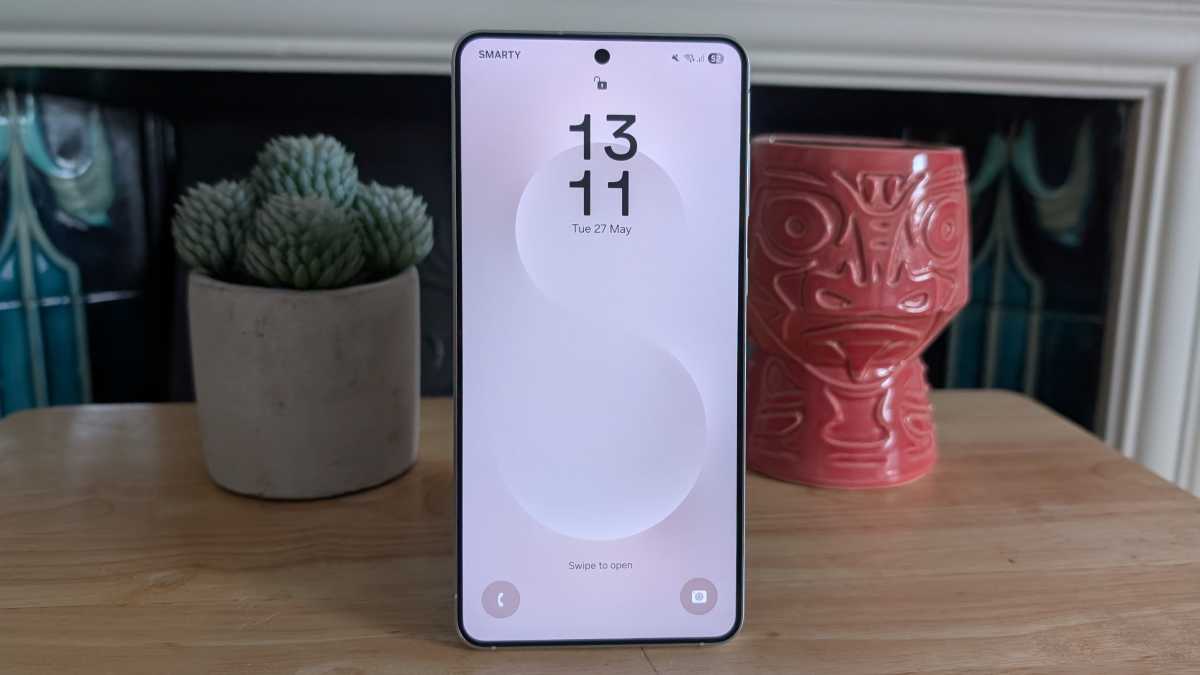
Anyron Copeman / Foundry
The S25 Edge’s display is excellent and undoubtedly one of its best features. It’s incredibly detailed, even if you don’t bump the resolution up from the default FHD+ (2340 x 1080).
As an OLED, you get rich, vibrant colours and deep blacks, making it perfect for movies or TV. At the same time, I love that Samsung gives you the option to swap out the default ‘Vivid’ mode for ‘Natural’ and even fine-tune the white balance or colour temperature to your liking.
The 120Hz refresh rate means scrolling and navigation feel incredibly smooth and fluid, although I would’ve liked the option to stick at 120Hz the whole time. Instead, you’ll have to choose between an automatically adjusting ‘Adaptive’ mode and a fixed 60Hz, which I’d only recommend if you’re trying to conserve battery life.
The S25 Edge’s display is excellent and undoubtedly one of its best features
Another small thing to be aware of is that the S25 Edge doesn’t benefit from the anti-reflective coating found on the S25 Ultra, although you can buy a similar-looking screen protector from the Samsung website.
Either way, with a peak brightness of 2600 nits (I recorded an impressive 743 nits at home), visibility, even in direct sunlight, isn’t an issue at all.
Make no mistake: the S25 Edge’s display is excellent in pretty much all scenarios, even if it’s a small step down from the Ultra.

Anyron Copeman / Foundry
Sadly, the same can’t be said for the in-display fingerprint sensor. Just like the other S25 phones, it’s an ultrasonic version, so it should be faster and more reliable than the more popular optical ones. But in my experience, it was slow, unreliable and very sensitive to moisture. Luckily, the face unlock is secure enough to authenticate payments and log into banking apps, so I just used that instead.
Like the vast majority of phones, the S25 Edge has stereo speakers: one at the bottom, plus the earpiece. I’d describe the audio as above average, with a nice depth to the sound, but it still lacks bass and can sound tinny at high volumes. As usual, connect headphones if you’re serious about sound quality.
Specs & Performance
- Snapdragon 8 Elite for Galaxy
- 12GB of RAM
- 256- or 512GB of storage
Like all of the Galaxy S25 phones, the S25 Edge is powered by the Snapdragon 8 Elite for Galaxy. It’s an overclocked version of Qualcomm’s latest (at the time of writing) flagship chipset, with benchmarks suggesting it’s the most powerful processor found in any Android phone.
So, it should probably come as no surprise that everyday performance is stellar. Alongside 12GB of RAM (on both models), the S25 Edge breezes through everyday tasks with ease. We’re talking web browsing, messaging, emails, navigation, watching videos and taking plenty of photos.
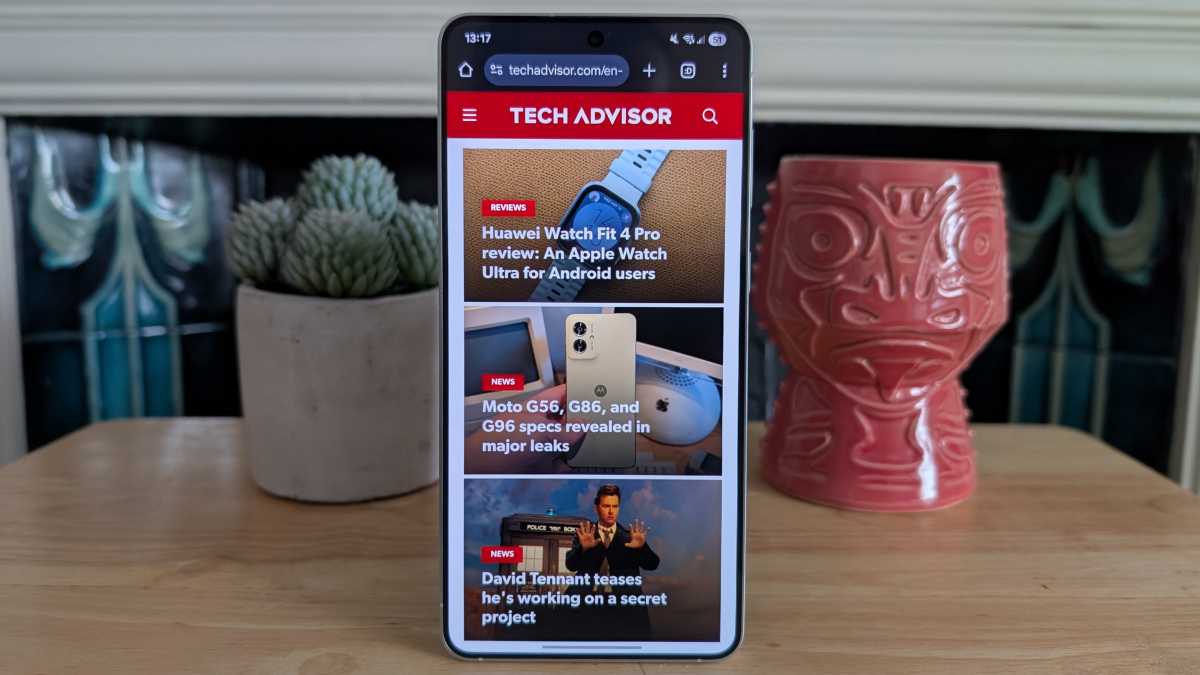
Anyron Copeman / Foundry
Even when I opened dozens of apps, quickly switched between them or used split-screen multitasking, there was no stuttering or hesitation whatsoever. Impressive.
In theory, the S25 Edge is plenty powerful enough to be a potent gaming machine. But while it handles casual titles with ease, stepping up to more demanding games can be problematic.
The main issue I noticed was just how hot the phone gets. Even downloading the resources for Genshin Impact (which took a good 15 minutes) caused the phone to overheat in a way that didn’t seem healthy.
If gaming is a priority, the S25 Edge isn’t the phone for you, but you probably knew that anyway
Things settled down a lot once the game began, but gameplay still appears to suffer slightly. I selected the 120Hz ‘Performance’ mode, which was generally smooth but suffered some noticeable dropped frames here and there. It was a similar story during Call of Duty: Mobile and Real Racing 3; all three are very playable, but you might want to reduce the settings to ensure a great experience.
Ultimately, if gaming is a priority, the S25 Edge isn’t the phone for you, but you probably knew that anyway. For anything less demanding, it passes with flying colours, as the benchmarks show.
Samsung Galaxy S25 Edge benchmarks
Samsung makes it simple when it comes to storage options: 256- or 512GB. Just make sure you get enough, as there’s no support for Micro-SD expandable storage.
Cameras
- 200Mp main rear lens
- 12Mp ultrawide, 12Mp selfie
- No telephoto camera
The Galaxy S25 Edge’s camera system brings both good and bad news, but let’s start with the positives.
Its 200Mp, f/1.7 main sensor is the exact same one found on the S25 Ultra. And if you’ve read our review of that phone, you’ll know what an excellent lens it is.
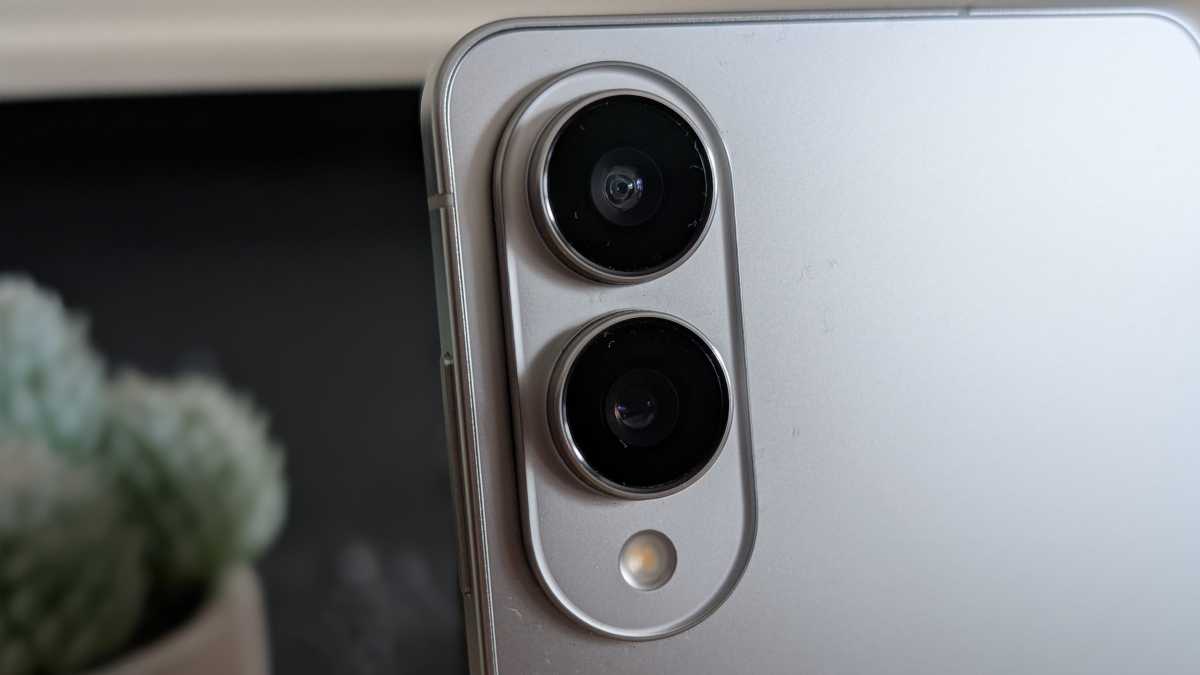
Anyron Copeman / Foundry
Alongside Samsung’s advanced software processing, the S25 Edge takes brilliant photos in almost all lighting conditions. In general, you can expect excellent detail and dynamic range, with the phone handling complex shadows well.
In the past, Samsung phones tended to produce vivid and highly saturated images, but that seems to have been toned down here. Instead, shots are impressively true to life, prioritising accurate colours over a photo that really pops. Of course, editing tools within the Gallery app make it easy to tweak things to your liking later.
The S25 Edge takes brilliant photos in almost all lighting conditions
During my testing, I experienced basically no shutter lag, making it a great option if you need to quickly snap something. Even with subjects in the photo moving around, most shots remain clear and focused.
If there is a weakness, it’s that the sky can be a little overexposed at times. On cloudy days, the subtle definition of clouds becomes more of a nondescript blob of grey, but it’s a minor concern.
In most other scenarios, including low-light environments, the S25 Edge coped well. The long-exposure night mode, which can be triggered manually or set to automatically enable, does a good job of preserving key details without introducing much noise.
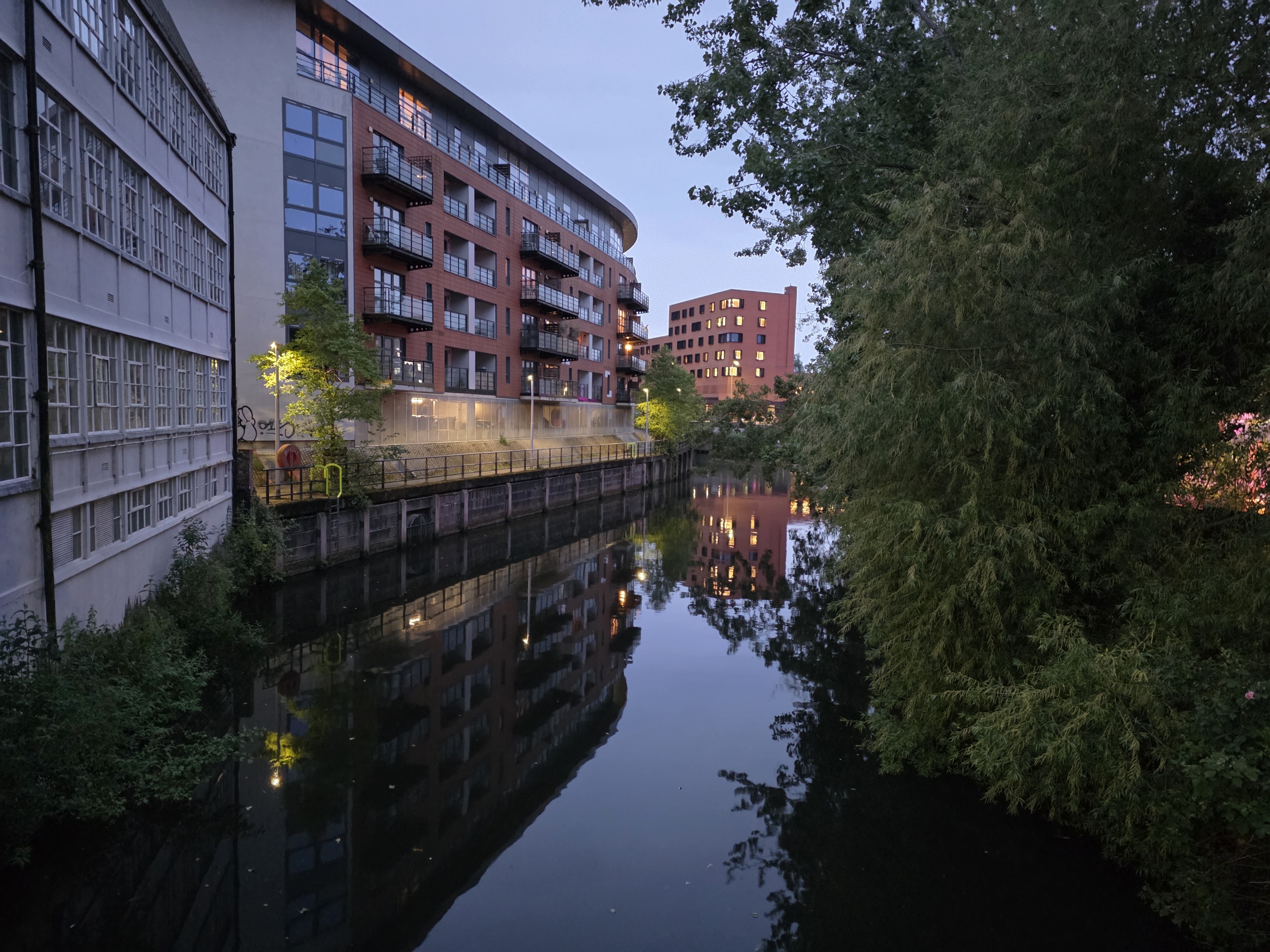
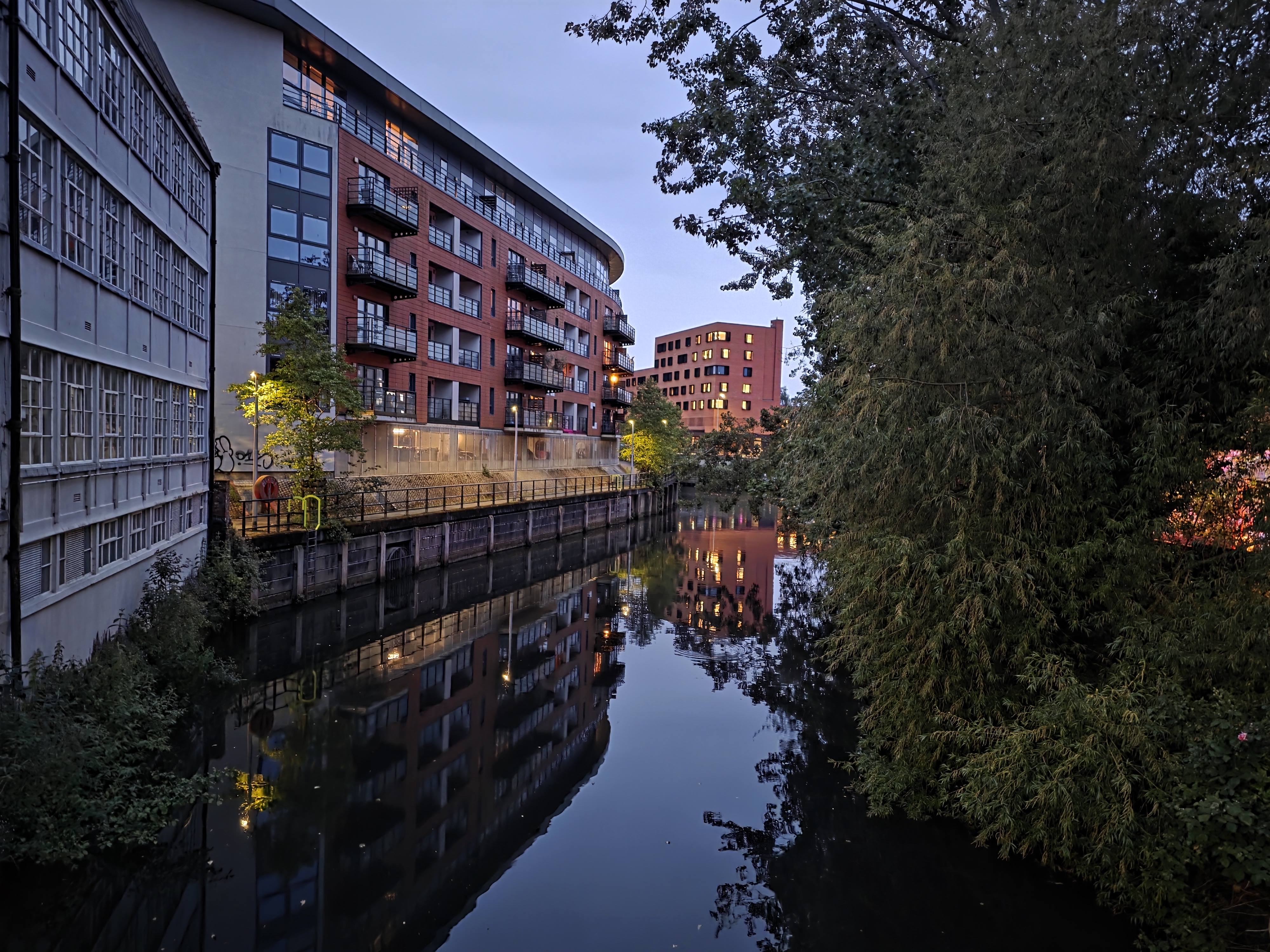
In my experience, the main lens is equally adept at taking photos of pets, architecture, and landscapes, as the gallery below shows. For the latter, you might be tempted to switch to the ultrawide.
At 12Mp, it’s the same lens as on the S25+, offering the flexibility of a 120-degree field of view. While there is a noticeable downgrade compared to the main lens, the drop-off in quality isn’t as severe as you’ll find on some other phones.
Sadly, the S25 Edge lacks a telephoto lens of any description, and I really missed it. As a result, the zoom (via the main lens) is entirely digital, and tops out at 10x. Given these limitations, the quality of photos is better than expected, but still a big step down from the S25+ and S25 Ultra.
Given that most portrait mode options rely on the telephoto lens, the quality of these photos also suffers. You can still get an attractive background blur (that’s adjustable before or after you take the shot), but edge detection is often a problem. Great portraits are possible, just not consistently.
As it turns out, the 12Mp front-facing lens does a better job with portraits. It’s the same as on all the other S25 phones, and produces consistency clear selfies that handle my skin tone well. There is the option to crop out slightly to fit more people, but make no mistake, this is far from being an ultrawide lens.
On the video side, the S25 Edge can shoot in up to 4K at 60fps. I tested the default 1080p at 30fps and it’s…fine. Optical image stabilisation (OIS) on the main lens means footage remains impressively smooth, but it’s a shame that Samsung can’t translate its photography prowess into video that can match the quality of the iPhone.
Battery Life & Charging
- 3900mAh battery
- 25W wired charging
- 15W wireless charging
Before testing the Galaxy S25 Edge, its battery life was a major concern. With a 3900mAh cell, it’s more than 20% smaller than the Galaxy S25+, a device which has very similar specs.
While I understand the space constraints caused by the thin and light design, it seemed too small to ensure genuinely good battery life. So, has Samsung worked its magic to avoid battery life being a problem?
Sadly not. The S25 Edge’s battery life isn’t the worst I’ve ever tried, but that doesn’t mean it’s good. On most days, a full charge will last until bedtime, but I’d always take a power bank if you’re planning on doing a lot of navigation or photography.

Anyron Copeman / Foundry
For most of my testing time, I was working from home, meaning a full day of battery life was more comfortable. But even during a short two-hour trip out with only around half an hour of usage, my phone dropped from 20% to 1%. That’s concerning to say the least.
After just an hour or so of gaming, the battery went from 45% to 15%. Unless you have a charger nearby, I wouldn’t recommend it for much longer.
The S25 Edge’s battery life isn’t the worst I’ve ever tried, but that doesn’t mean it’s good
Of course, there are things you can do to prolong battery life, such as turning down brightness, turning off location, disabling mobile data, and enabling power saving mode. But you shouldn’t have to do any of these things just to make sure a high-end phone makes it to the end of the day.
The charging situation is just as disappointing. While the Galaxy S25+ and S25 Ultra both offer 45W wired speeds, the S25 Edge is limited to just 25W.
That’s offset slightly by the small battery, so my sample went from 0-53% in half an hour and was fully charged after 70 minutes, but I was still expecting more. Considering how warm the device was getting while charging, I can only assume the lower wattage is to limit heat build-up.
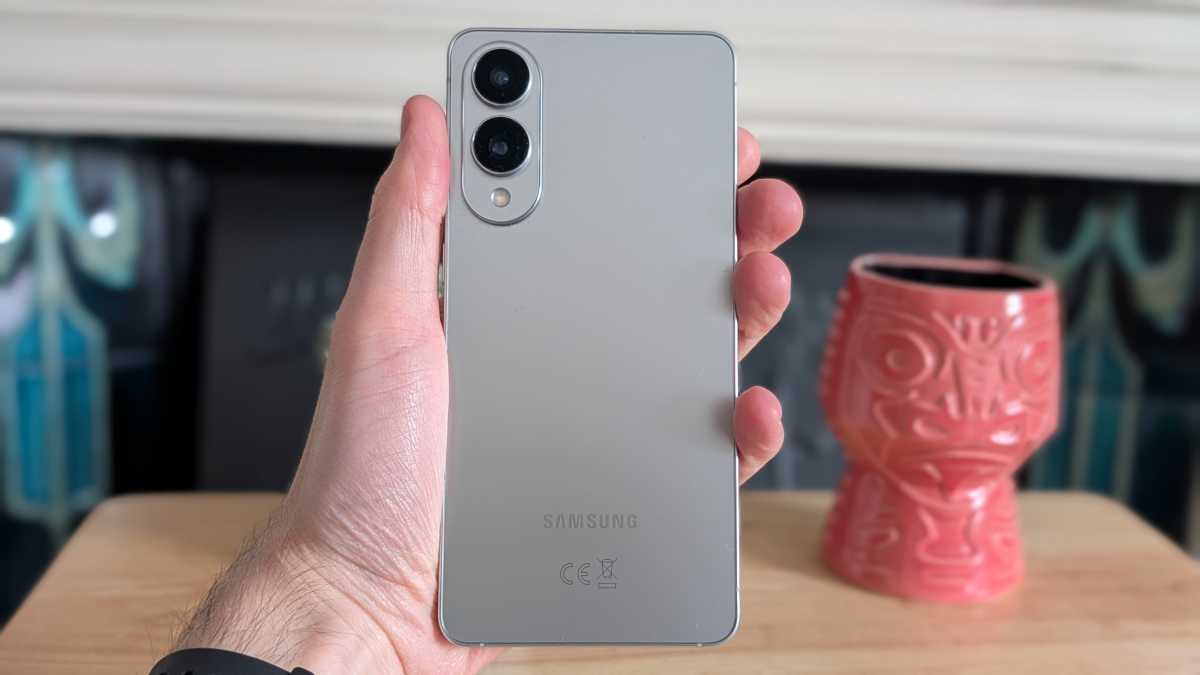
Anyron Copeman / Foundry
It’s also worth noting that you get 15W wireless charging here, but no reverse wireless charging.
Software & Apps
- One UI 7 over Android 15
- Lots of Galaxy AI features
- Seven years of OS and security updates
Out of the box, the Galaxy S25 Edge runs Samsung’s One UI 7 over Android 15. However, it hopefully won’t be long before we get One UI 8, with it and Android 16 on the way soon.
Still, even in its current form, One UI is one of the best things about Samsung phones – the S25 Edge included. While quite different from ‘stock’ Android on Google Pixel, it offers a slick, intuitive user interface that’s full of customisation options.
In fact, I’ll stand by my opinion that One UI is the best software experience you’ll get on any Android phone.
Samsung lets you fully adjust the home screen, unencumbered by the At a Glance widget and search bar that the Pixel UI doesn’t let you remove. You can remove the names below the icons (which I find particularly annoying, and forgot I could even do before taking the photo below), and there are loads of stunning widgets to choose from.
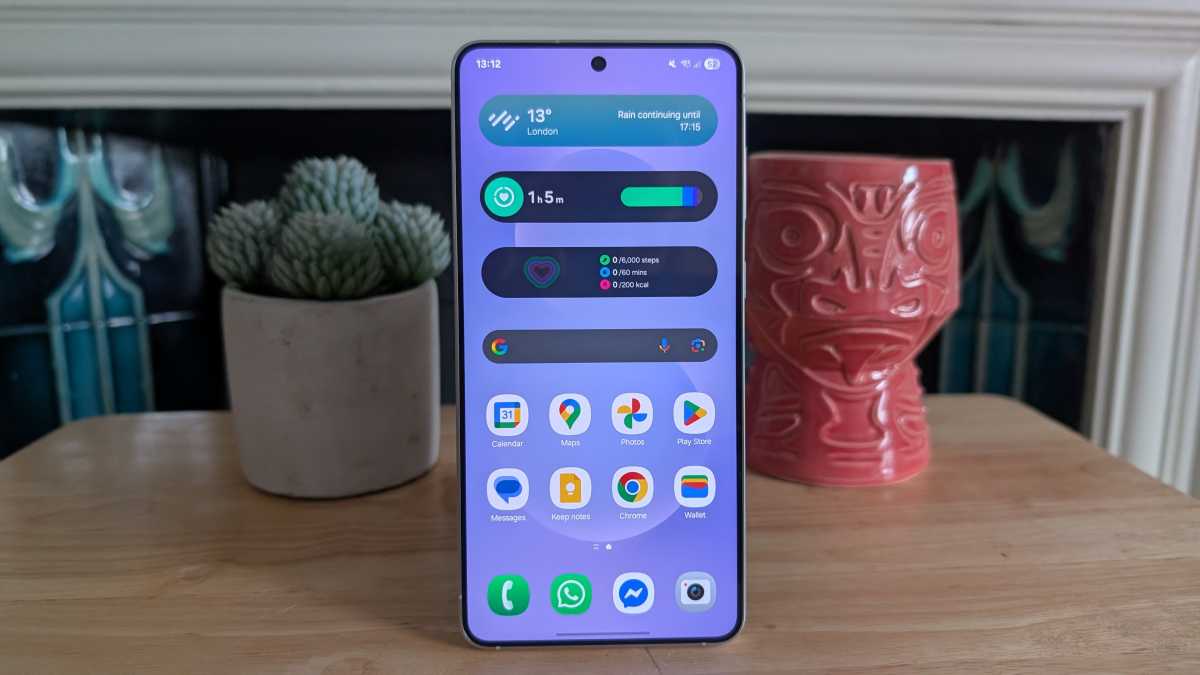
Anyron Copeman / Foundry
I also really enjoy being able to use natural language while searching in Settings, while the quick settings panel offers separate toggles for Wi-Fi and mobile data, two things I’m regularly turning on and off.
One UI is one of the best things about Samsung phones – the S25 Edge included
However, it’s not all good news. While I quite like the iPhone-style separation of quick settings panel and notification tray, it won’t be for everyone. And with Samsung making its own version of almost all of Google’s stock apps, there can be a lot of bloatware to sort through.
But overall, I’m really impressed. Samsung’s Galaxy AI is roughly on par with Google, including a range of calling, writing, and photo and video tools, most of which work well but are far from game-changing.
The main exception to this would be Interpreter Mode, which enables real-time translation between many different languages, including when offline, if the relevant language packs have been downloaded. It’s a potential game-changer for travel.
Alongside Google Gemini integration and features such as Circle to Search, it’s a comprehensive suite of AI by 2025 standards.
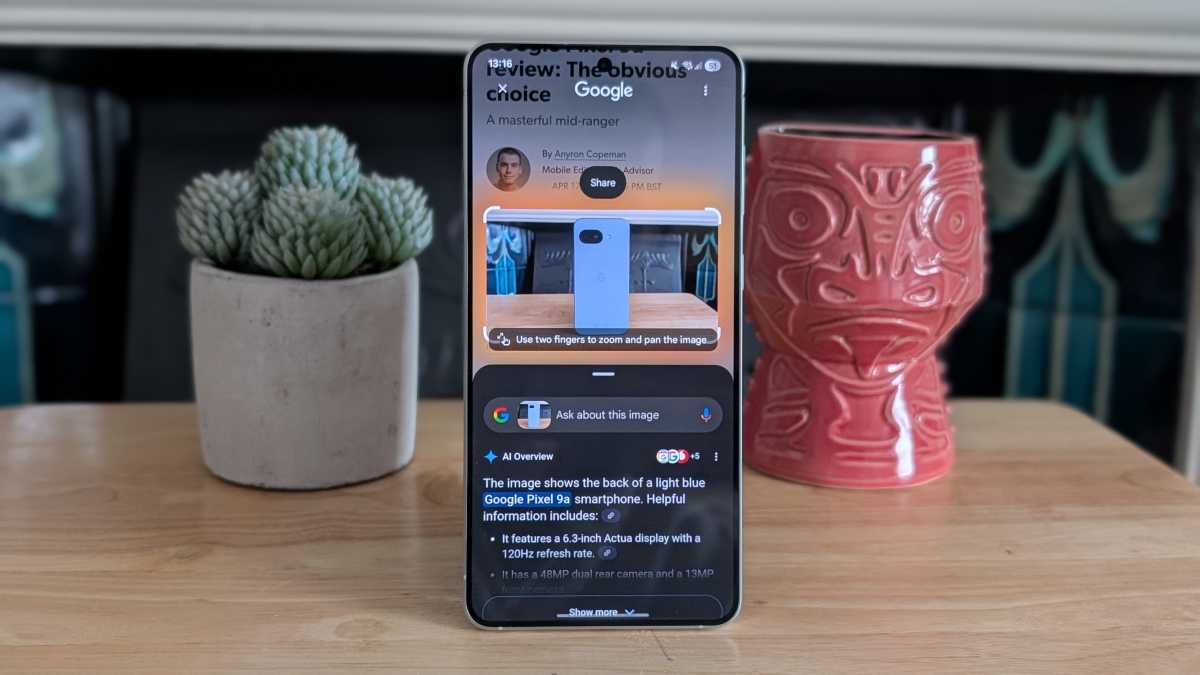
Anyron Copeman / Foundry
Samsung and Google also continue to lead the way when it comes to software support. The S25 Edge will receive seven major versions of One UI (or whatever replaces it), plus security patches until 2032. Even if you don’t plan on using the phone for that long, it’s great to have peace of mind.
Price & Availability
The Galaxy S25 Edge doesn’t come cheap.
When buying outright, it starts at £1,099/$1,099.99 for the 256GB model, while stepping up to 512GB will cost you £1,199/$1,219.99.
That makes it the second most expensive phone in the Galaxy S25 series, costing more than the S25+ (from £999/$999.99) but less than the S25 Ultra (from £1,249/$1,299.99).
You can buy one from Samsung UK and Samsung US, plus via a range of third-party retailers, including Amazon UK and Amazon US.
Buying on contract will reduce the initial outlay and often provide an allocation of calls, texts and mobile data, but it tends to work out more expensive in the long run.
At this price, it’s going up against the very best phones you can buy. Non-Samsung rivals include the Google Pixel 9 Pro XL, OnePlus 13 and Apple’s iPhone 16 Pro Max.
Should you buy the Samsung Galaxy S25 Edge?
Probably not. Unless a thin and light design is your top priority, other phones offer a better balance of specs for the price.
The 5.8mm, 163g design is a joy to behold, especially when combined with a brilliant display, generally strong performance and the same excellent 200Mp main camera as the S25 Ultra.
However, there are three potential dealbreakers here. Battery life is disappointing, charging is slow, and there’s no telephoto lens. Putting up with one or even two of these would be just about acceptable, but all three feels like too much.
While it’s still a good phone, the S25 Edge makes too many compromises to achieve its ultra-slim design.
Specs
- One UI 7, based on Android 15
- 6.7-inch, 1440 x 3120, AMOLED, 120Hz
- Ultrasonic fingerprint scanner
- Qualcomm Snapdragon 8 Elite for Galaxy
- 12GB RAM
- 256GB / 512GB storage
- 200Mp, f/1.7 main camera
- 12Mp, f/2.2 ultrawide
- 12Mp, f/2.2 selfie
- Up to 4K @ 30fps rear video
- Stereo speakers
- Dual-SIM (outside US) + eSIM
- Wi-Fi 7
- Bluetooth 5.4
- 3900mAh battery
- 25W wired charging
- 15W wireless charging
- 158.2 x 75.6 x 5.8 mm
- IP68 certified
- 163g
- Colours: Titanium Silver, Titanium Icyblue, Titanium Jetblack































